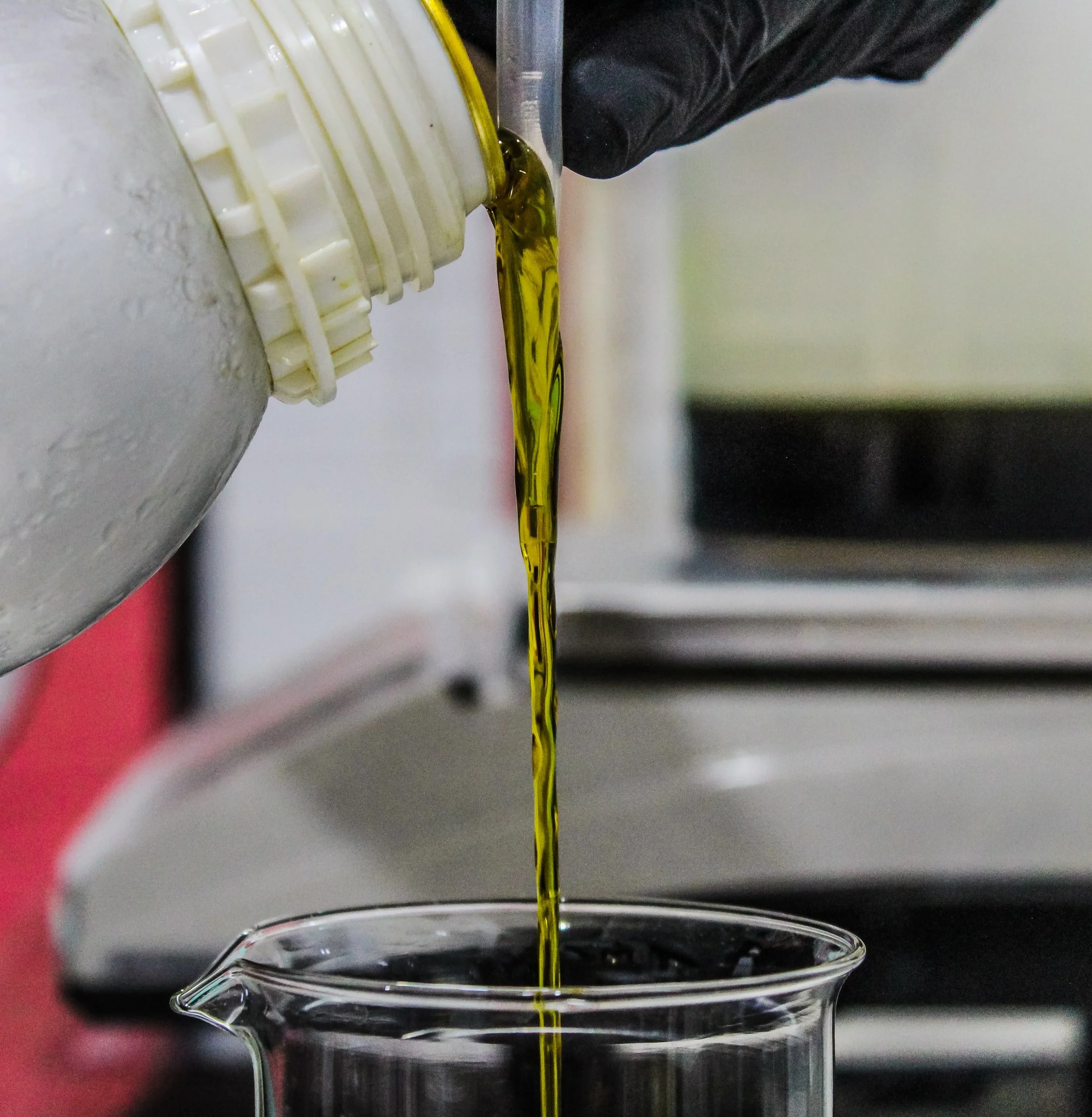Lipid oils structure
Lipid oils comprise 85% or more essential fatty acid chains of different lengths and saturations. Their structure, in many cases, resembles the skin’s surface, making them a valuable addition to any skincare or wound care product.
Unsaponifiable Fraction:
The rest of the composition contains an “unsaponifiable” fraction. This part does not change even if the oils are processed unless refined and purposely removed. They include the vitamins, minerals, taste, smell and colour, among other things, that make up the unique character of the oil. This is sometimes called the “healing fraction” of the oil.
Saponification value (SAP value)
Each oil also has a “saponification value” (SAP value), a term from soapmaking. It determines the amount of milligrams of potassium hydroxide needed to turn the oil into soap.
The iodine value of an oil
An iodine value is sometimes used to determine how saturated or unsaturated an oil is, which can help determine its properties.
This is a test to see how much iodine is absorbed in 100g of oil and to observe any changes in colour or consistency. It can also be used to determine the approximate shelf life of an oil. The higher an iodine value, the more unsaturated it is and, therefore, the more sensitive it is to oxidation. The advice is to avoid heating oils with an iodine value higher than 100 to avoid degradation.
Knowing the iodine value can also help in formulations where sometimes it is required to heat up elements to create a product or an emulsion. The order of heating should go from saturated to unsaturated components.
Bee or plant waxes
Saturated butter
Mono-unsaturated oils
Polyunsaturated oils (sometimes with no additional heating required)
Fatty Acid Composition of lipid oils
Fatty acids are the building blocks of any plant oil. They are carbon and hydrogen atoms that form chains. If there are no gaps in between, they are called saturated. The more unsaturated, the more prone to oxidation they become. Fatty acids come in various compositions and lengths that can alter how they interact with elements around them and change their consistency and properties. A lipid oil is usually a mixture of short, medium and long fatty acid chains. The ratio of each determines its properties and melting point.
Saturated and Unsaturated fatty acids:
Saturated fatty acid profiles have no structural gaps, so it does not bend. Solid at room temperature and quite brittle. Butters and waxes like cocoa usually have saturated fatty acid profiles. Saturated lipids like cocoa butter become a liquid when more solid lipids are melted. Although they are called a butter, they are technically classified as oils. Saturated oils remain slippery to the touch even when they are hard.
The longer the saturated chain, the harder it is and the higher the melting point. The more unsaturated a fatty acid profile, the softer and more liquid it becomes and the lower its melting point. It is easy to spread and stays in liquid form for longer.
Essential fatty acids (EFAs)
There is a group of fatty acids called “essential” as they can not be produced by the body but are required to maintain healthy body cells and skin. Many of the most healing and protective lipid oils are rich in these EFA.
Linoleic Acid (LA)
is the parent compound of the n-6 PUFAs; α-linolenic acid (ALA) is the parent compound of n-3 PUFAs. The body synthesises longer chain derivatives from these two parent compounds, which also have important functions in healthy skin. (1) Applying certain oils rich in essential fatty acids is an effective way to deliver it to the skin and eventually the rest of the body; internal consumption can also work, but a lot of it is metabolised and lost while it passes through the liver internally.






